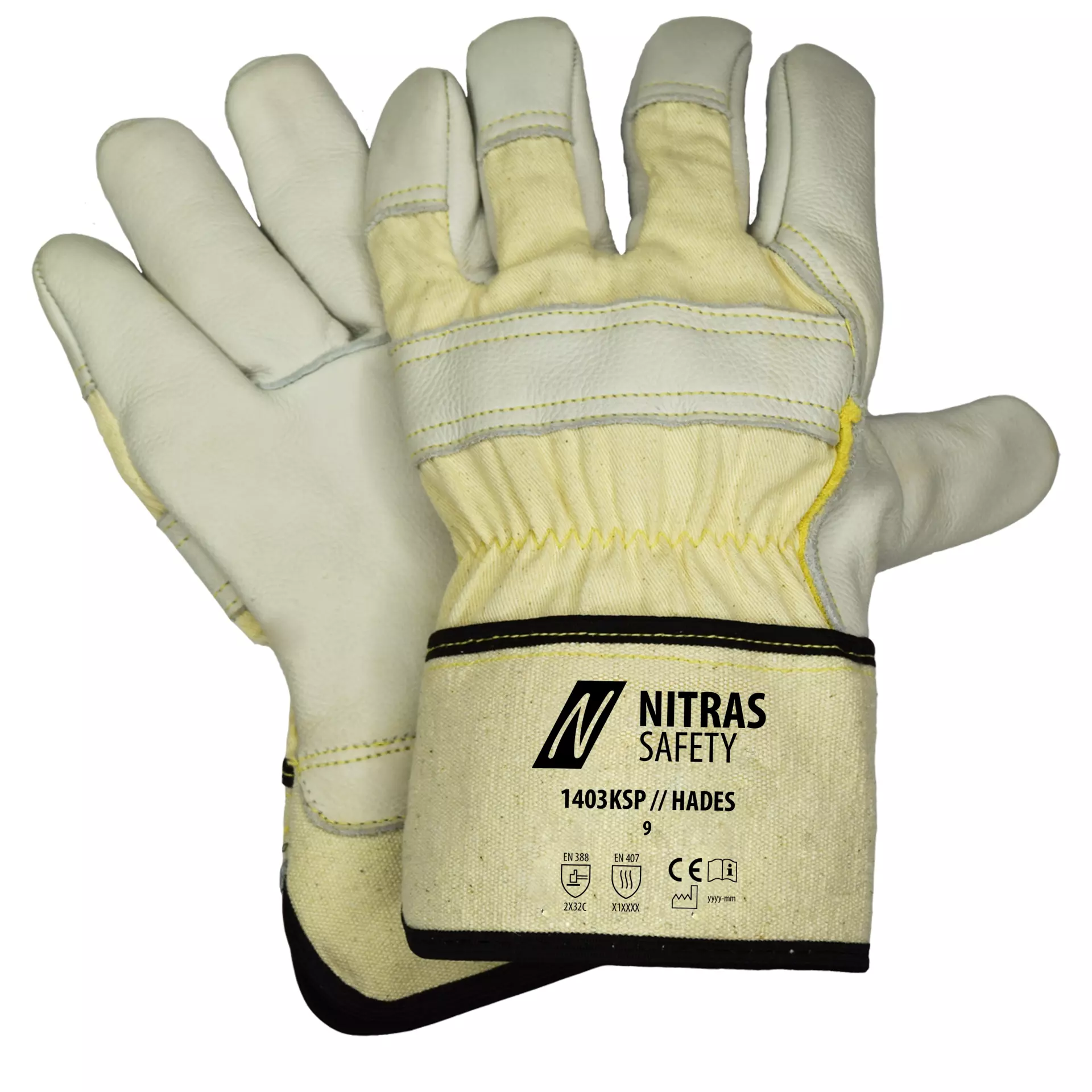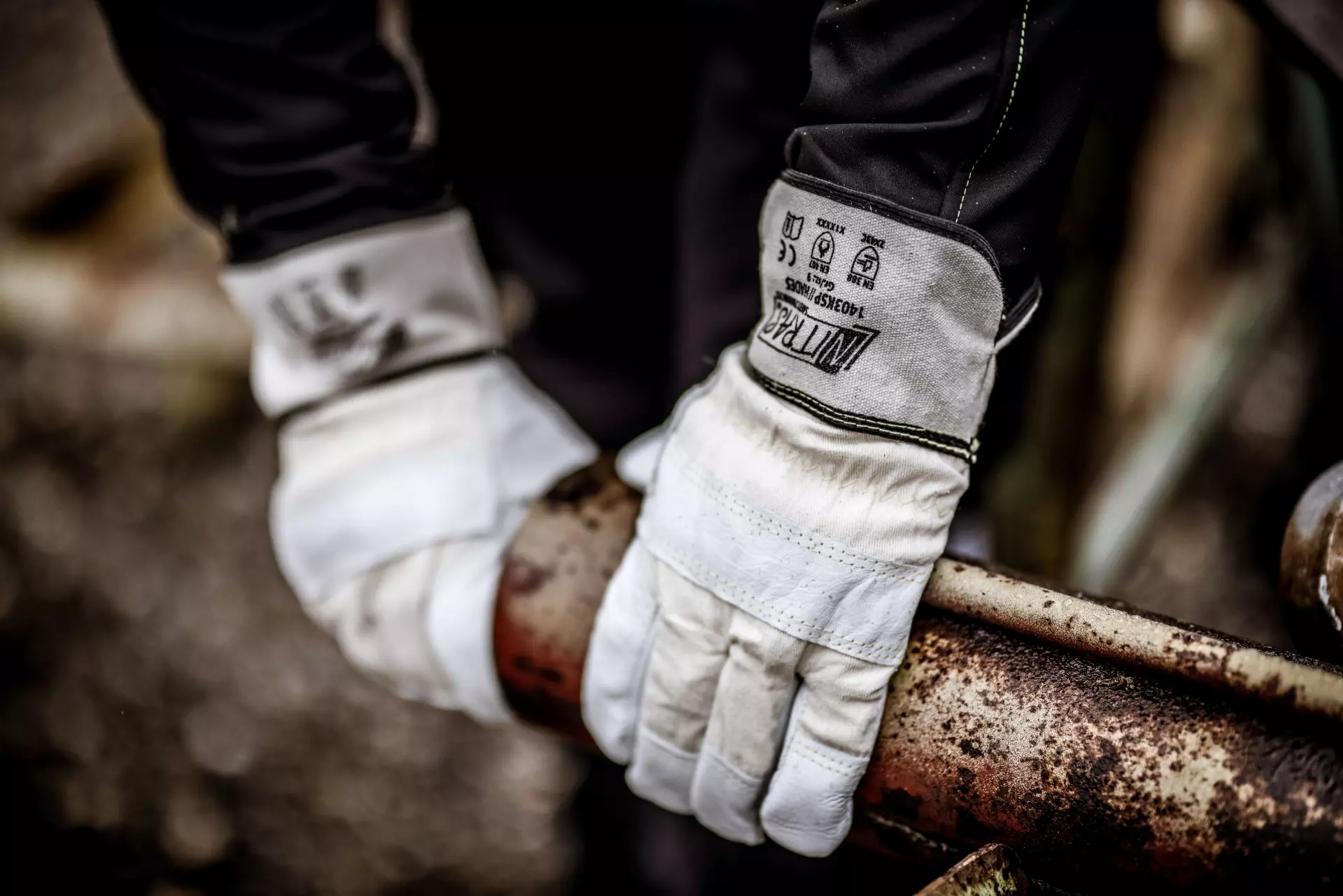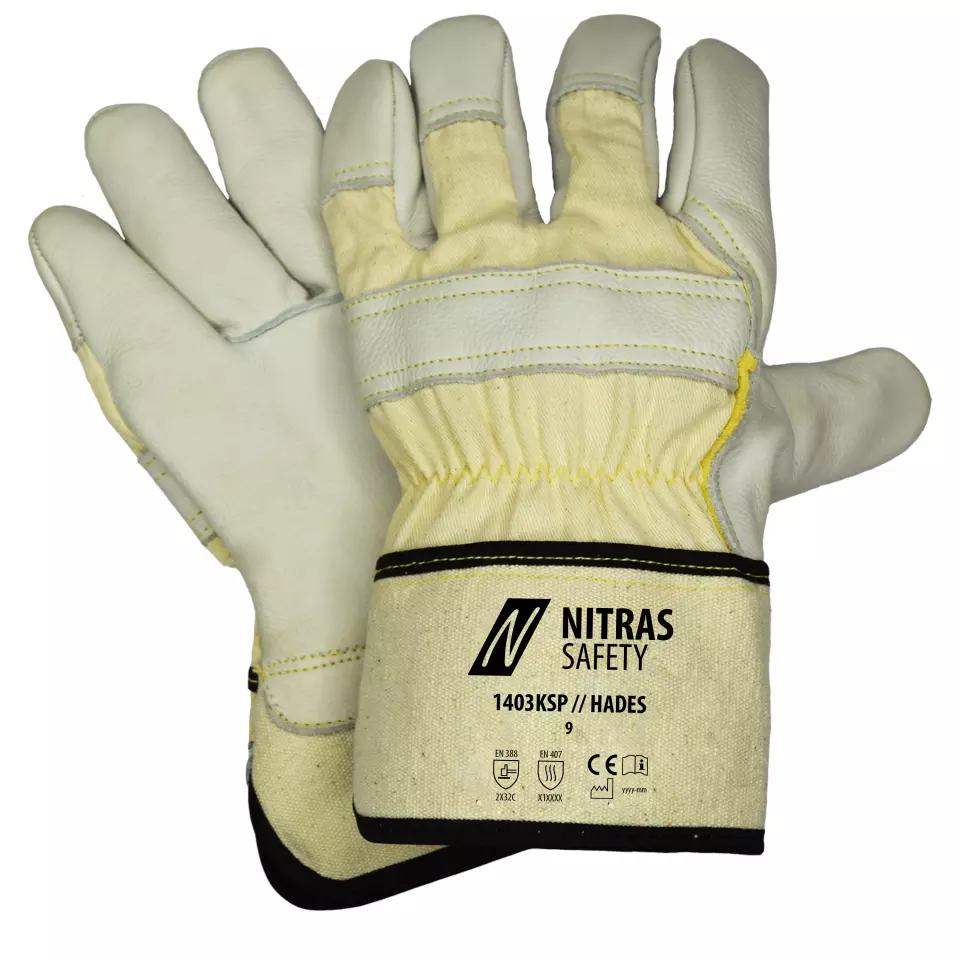

Features You'll Love

Palm Material · Cowhide Leather
The material used on the palm side of the glove, affecting grip, durability, protection level, and comfort during use.

EN 388 · Cut Resistance, ISO 13997 Level C, Abrasion Resistance Level 2
EN 407 · Radiant Heat Level X, Metal Splash Resistance Level X, Molten Metal Resistance Level X, Burning Behaviour Level 4, Heat Convection Level X
Offers medium protection against cut risks from handling lightweight metals and plastics.
Withstands moderate rubbing and friction, offering good protection for tasks involving handling rough materials.
This product was not tested for protection against radiant heat, which is intense heat that can be felt from a distance. It does not claim to offer protection for tasks involving prolonged exposure to radiant heat sources.
This product has not been tested for resistance against splashes of molten metal under the EN 407 standard. It does not offer rated protection for tasks where this is a risk, such as welding.
This product has not been tested for resistance against splashes of molten metal. It provides no claimed protection and should not be used for welding, foundry work, or other tasks with molten metal risks.
Provides the highest level of protection against catching fire when exposed to a naked flame. After the flame is removed, the material will stop burning within 2 seconds and stop glowing within 5 seconds.
This product was not tested for protection against convective heat, which is the transfer of heat through moving air, such as from a flame. Therefore, it has no claimed performance level for this specific thermal risk.
Nitras
HADES Cut protection Gloves, 12 pairs
HADES Cut protection Gloves, 12 pairs
4.7 / 5
108,54 €
Price per 12 pairs
9,04 € / pair
Choose size
Free delivery
Features You'll Love

Palm Material · Cowhide Leather
The material used on the palm side of the glove, affecting grip, durability, protection level, and comfort during use.

EN 388 · Cut Resistance, ISO 13997 Level C, Abrasion Resistance Level 2
EN 407 · Radiant Heat Level X, Metal Splash Resistance Level X, Molten Metal Resistance Level X, Burning Behaviour Level 4, Heat Convection Level X
Offers medium protection against cut risks from handling lightweight metals and plastics.
Withstands moderate rubbing and friction, offering good protection for tasks involving handling rough materials.
This product was not tested for protection against radiant heat, which is intense heat that can be felt from a distance. It does not claim to offer protection for tasks involving prolonged exposure to radiant heat sources.
This product has not been tested for resistance against splashes of molten metal under the EN 407 standard. It does not offer rated protection for tasks where this is a risk, such as welding.
This product has not been tested for resistance against splashes of molten metal. It provides no claimed protection and should not be used for welding, foundry work, or other tasks with molten metal risks.
Provides the highest level of protection against catching fire when exposed to a naked flame. After the flame is removed, the material will stop burning within 2 seconds and stop glowing within 5 seconds.
This product was not tested for protection against convective heat, which is the transfer of heat through moving air, such as from a flame. Therefore, it has no claimed performance level for this specific thermal risk.
Product description
Premium cut-resistant protective gloves featuring cow grain leather construction with cotton backing and specialized KATA 5 yarn lining throughout the hand area. These gloves offer superior cut resistance and protection against contact heat up to 100°C for 15 seconds. Enhanced durability is achieved through double-stitched Kevlar seams and premium leather selection A quality.
Product Features:
- Complete hand lining with KATA 5 special yarn
- Double-stitched Kevlar seams
- Canvas cuff for secure fit
- Premium leather selection A
- Cotton back construction
Technical Details:
- Heat protection: 100°C for 15 seconds
- High cut resistance rating
- Full hand protection design